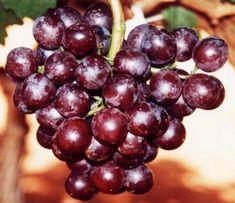
In the last three years, in volume terms, grape consumption in the UK is up by between 15 and 16 per cent, and this year, to the end of November, it is up again by six per cent, according to TNS data.
“Grapes are the modern, convenient, snacking product,” says JPFD group marketing manager Dickon Poole. “There is a long-term underlying growth trend and grapes will continue to be an expanding category.
“Segmentation of the category has played a large part in maintaining the consumption growth, but just as important have been the extension of the seasons, increased storage potential and the resultant fluidity and consistency of quality and variety availability in the marketplace.”
Grapes are rapidly closing the gap on bananas as a category in value terms, although this is largely because banana prices have been brought to their knees by the supermarket price war in the UK. But penetration still has room to increase. Some 77 per cent of UK homes purchased grapes in the last 12 months, compared with a figure in excess of 90 per cent for bananas. However, the frequency of purchase has risen by five per cent in the same timeframe, another example of the successful merchandising of the category by retailers and their category suppliers.
The general upping of the ratio of prepacked grapes on the shelves is encouraging consumers to trade up, while simultaneously reducing the opportunity for informal taste testing and eliminating on-shelf wasteage, which is inevitable within the loose offer that consumers are often happy to rummage through like a jumble sale.
One recent survey suggested that 74 per cent of consumers try grapes before making their decision to buy. Zip-lock bags have doubtless reduced that figure, but punnets nevertheless allow the supply chain the opportunity to manage its waste more efficiently, and ultimately add value to the in-store offer and enable the supermarket customers to compete strongly on price.
Atha Mandis at JPFD, perhaps surprisingly, says: “The strange thing is that our customers and other retailers are receiving far more complaints proportionally about their punneted grape offer than their loose. This is probably because the customer expectation for a punneted product is higher. Also, when purchasing loose, they have the prior option to taste and are able to remove any less than perfect berries from the bag before they put it in their baskets. One bad grape in a punnet is more noticeable.”
To a marketing man, the advent of more punneted fruit on-shelf is very attractive. “It is difficult to gauge whether the consumption growth curve has been influenced by the additional volume of punneted fruit,” says Poole. “I think punneted and loose grapes are complementary at the moment, and any steal has been swallowed up in the general growth in sales. But obviously it is easier to market the product in punnets than it is when sold loose. You can put messages and prices on-pack and communicate with the consumer about different varieties.”
Stephen Fagg, JPFD’s commercial director - fruit, says: “Having the price on the pack also eliminates the possibility of embarrassment for a consumer who might take loose grapes to the till before realising they can’t afford them.”
On page 16 of this supplement, JPFD outlines the possible benefits of a new post-harvest solution for its grape offer. Fagg believes the convenience stores will see the value of extra shelf-life as much as any format. “One of the traditional problems in store has been the inefficiency of the decanting process and the damaging effect that has on shelf-life. The rate of sale is lower in a convenience store, but if grapes can remain on the shelf for a little bit longer the retailer is bound to benefit,” he adds.
The availability of better varieties for longer periods is also a key driver, he says. “Crimson Seedless, for instance, has played an enormous part in the growth of the red grape market. It is a better eating, more robust variety than Flame and does not experience any of the disease or quality problems. Crimson turned people onto red grapes, and the addition of consistency to the red market has made a huge difference to the grape category as a whole.”
JPFD, through an exclusive agreement with its holding company Dole has a tranche of new varieties in the pipeline. “Ice”, a white grape, “Cerise”, a red variety and black seedless type “Desert” are all exclusive to JPFD and its customers for 10 years in the UK. They have been grown to date in South Africa, but commercial production will extend to Morocco and Chile.
“Thompson is the preferred white variety and Crimson the preferred red, as both are widely acknowledged for consistency of texture and taste. But it is important that we are in a position to propose new and improved varieties to our customers,” says Fagg. “Cerise in particular is very exciting. It is an early variety that, like Crimson, does not have the conditional problems of Flame, but it also has a very distinctive flavour and maintains its crispness of texture where other varieties often soften in transit.”






No comments yet